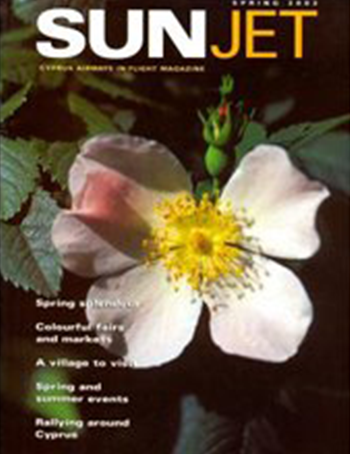
THE GUARDIAN
The Secret City
Despite frequent references in the Psalms to "the peace of Jerusalem", the Holy City has probably seen more rapine and pillage than any other comparable patch of ground on the planet. Art historians and medieval architectural buffs are usually associated more with ivory towers than with war zones; yet such is the embattled nature of Jerusalem that it draws into its controversies even the most detached academics. Palestinian and Israeli archaeologists and historians differ radically in their interpretation of almost every turn in their capital city's past.
Israeli historians have traditionally tended to look to the Hebrew Bible to back up the Jewish claim to Jerusalem. They point to the Book of Samuel to show how King David established his capital in the city 1,500 years before an Arab army first appeared below the walls. Palestinians reply that King David's Jerusalem has only the most shadowy basis in the archaeological record, while his empire - one of the principal Zionist claims to great tracts of the Middle East - is more a religious poet's patriotic fantasy, written 1,000 years after the events it describes, than a secu lar historian's solid fact.
The arguments are no less bitter for later periods, those 1,900 years of Christian and Islamic Palestinian history which were more or less erased from the collective Israeli memory as the new nation leap-frogged backwards two millennia and looked to the ancient past for its sustenance and inspiration. The symbols of the young Israeli state - the national seal, the medals, even the postage stamps - all drew on symbols from ancient Jewish history.
Despite the attempts at rapprochement over the last 10 years, the official Israeli line is still to write off the entire Islamic period as a period of unmitigated decline, with nomad conquerors sweeping in from the desert, massacring or wiping out the indigenous population and leaving the area a semi-depopulated desert until the birth of the Zionist movement in the 19th century. Despite the fact that no serious historian, in Israel or elsewhere, would even begin to try to defend such a crude distortion of Palestine's medieval history, this version still possesses a half-life in Israeli government propaganda.
Take, for example, Facts About Israel , the introduction to the country produced by the Israeli Ministry of Foreign Affairs. Here, following an extremely detailed 11-page account of the Biblical Israelite kingdoms, 1,400 years of Islamic history is written off in just one paragraph: "Arab migration in and out of the country started at the time of the Arab conquest of the Land in the seventh century, fluctuating thereafter with economic growth and decline. Towards the end of the 19th century, when increased Jewish development stimulated economic and social revival in the Land, many Arabs from surrounding countries were attracted to the area by its employment opportunities, higher wages and better living conditions."
The rest of the historical section of Facts About Israel is given over to a highly dubious account of the creation of the modern state of Israel, which fails to mention what to Palestinians is the central event of the modern history of the region: the Catastrophe of 1948, in which nine-tenths of the indigenous Palestinian population were ethnically cleansed from their ancestral homes in an organised operation codenamed Plan Dalit. Four hundred of the recently deserted Palestinian villages were then systematically bulldozed. In the process Palestinian society was uprooted and destroyed. Israeli embassies across the globe continue to disseminate Facts About Israel in huge quantities.
Israeli propagandists have been filling newspapers with different versions of this sort of politically motivated fantasy, which aims to dispossess the Palestinians of their history as fully as they have been dispossessed of their land. Conrad Black-owned papers, such as the Jerusalem Post and the Daily Telegraph, have been particularly susceptible to this sort of nonsense. The Spectator gave over its cover to an article by Daniel Pipes called "Not so Holy City", which put forward the thesis that under Muslim rule Jerusalem was always an "economic laggard and cultural backwater - Muslims have shown interest in Jerusalem only when inspired by pressing concerns, and have lost interest when those concerns lapse. It is then a mistake to equate the city's holiness for the two faiths." Pipes echoes the standard Israeli line that under Ottoman rule in particular, "lack of interest translated into decline and impoverishment".
Thankfully, a book has now been published that is the closest we are ever likely to get to a definitive historical statement on the subject. Ottoman Jerusalem, edited by Professor Robert Hillenbrand and Sylvia Auld, is the result of a major international project, bringing together the work of a team of 33 scholars. Running to two volumes and 1,100 pages, it is a grand historical landmark, and must be the most detailed survey ever published of a Middle Eastern city.
The essays on Ottoman Jerusalem include surveys of the political, social and religious history of the period, studies of Ottoman Jerusalem's intellectual and commercial life, its university, libraries, hammams and sufi monasteries, its costumes and songs and music. There is a fascinating pair of essays contrasting Ottoman Jerusalem in Islamic and western travel accounts, and the whole massive project culminates in a detailed architectural survey of every significant Ottoman feature in the entire city, from tiny pieces of decorative tilework and carved and painted ceilings to entire systems of fortification.
This degree of detail is particularly welcome, as Ottoman history as a whole is an unusually neglected subject. For 200 years from the mid-15th century, the Ottoman Empire was the most powerful force in all Eurasia: from behind the Sublime Porte, the sultan and his viziers ruled an empire comparable in size and importance to that of Rome, whose last capital it had conquered as its own. The documents in the huge Ottoman state archives - only partially opened to historians 10 years ago and still vigorously censored - are written in a difficult clerical shorthand version of Ottoman Turkish, itself an extinct language with an extinct script that can be read by only a handful of modern scholars. The Turks, taking their lead from Ataturk, deliberately ignore an imperial past they tend to think of as decadent and embarrassing. Few scholars have the necessary language skills to prove them wrong. These difficulties only add to the immense achievement of Ottoman Jerusalem. The result is a revelation.
It becomes clear that Jerusalem was never neglected by its Muslim rulers: almost every Ummayad, Mameluk and Ottoman sultan contributed something to the existing fabric of the city. The two most beautiful buildings in Palestine - the Dome of the Rock and the al-Aqsa mosque - were built soon after the Arab conquest, while the overwhelming majority of the buildings the traveller admires today in the streets of the Old City - the bazaars, tombs, colleges, courtyard houses and monumental street fountains as well as the great city gates - were built during the Mameluk and Ottoman periods. This 400-year Ottoman interlude provided, among other monu ments, the great spice bazaars and the city's astonishing white walls, the gift of Suleiman the Magnificent. They remain arguably the most decorative set of Ottoman fortifications in existence, just as the city as a whole remains probably the best preserved Ottoman cityscape to survive from the pre-modern Middle East.
Ottoman Jerusalem also nails one particularly pernicious myth: that Jerusalem was never an important cultural or religious centre for Muslims. In Ummayad times the city witnessed an unparalleled flourishing of the arts of which the Dome of the Rock is the most potent symbol. Later, in the Middle Ages, Jerusalem was a key centre of Sufi activity, as well as a renowned centre of book illumination and Islamic jurisprudence. Its streets filled with sufis, artists, scholars, lecturers, jurists and pilgrims from all over the Islamic world. The Ottoman traveller Eviliye Chelebi, who visited Jerusalem in 1648, describes the platform around the Dome choked night and day with pilgrims and dervishes from India, Persia, Central Asia, Kurdistan and Asia Minor. There are similar descriptions from Muslim travellers throughout the Middle Ages. In political and economic terms, Ottoman Jerusalem may not have been a major regional capital, but as one of the three Holy Places of Islam, it is impossible to overestimate its religious significance.
Review by William Dalrymple
William Dalrymple discovers a Muslim history of the Holy City in Ottoman Jerusalem: The Living City 1517-1917, edited by Sylvia Auld and Robert Hillenbrand, Altajir World of Islam Trust.
This article was published on Saturday 03 February, 2001.


